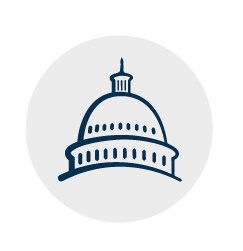Insurance Cost Data and Turmoil in the House
Everyone is undoubtedly aware of the volatility in DC with the House Republican conference trying to right their ship and elect a new Speaker. We will get to that shortly, but we want to report on a significant step in our efforts to address the insurance issue.
The National Leased Housing Association (NLHA) has released the results of the insurance survey they launched in the affordable housing space a few months ago. We want to thank all the HAG members who participated in the survey. This data will form the basis for our substantive conversations with Congress and the Administration on what can be done to mitigate the insurance crisis. We also appreciate Denise Muha and NLHA for undertaking the survey.
The data firm NLHA commissioned, NDP Analytics, did a terrific job analyzing the data and assembling a comprehensive report. As expected, affordable housing owners are experiencing higher premiums across multiple lines of insurance. Key points in the report:
For 2022-23 renewals, 29 percent of housing providers experienced premium increases of 25 percent or more, compared to 17 percent the previous year;
Limited markets and capacity are responsible for most premium increases; followed by claims history/loss and renter population;
67 percent of respondents reported increasing insurance deductibles to manage the increases, followed by decreasing operating expenses and increasing rent.
Please read the survey and let us know if you have any questions, comments, or additional information that might be helpful to our efforts in addressing the issue.
Now, to the effort to elect a Speaker of the House, we are in truly uncharted territory. The House Republican conference is scheduled to hear from the two announced candidates this evening, Majority Leader Steve Scalise (R-LA) and Congressman Jim Jordan (R-OH). Reports indicate neither candidate has secured the 217 votes necessary to become Speaker. This Republican conference is marked by seemingly immovable factions that, due to their slim 4-seat majority, make it next to impossible to reach consensus. If neither of the announced candidates can secure the necessary votes to win a vote on the House floor, another candidate may be nominated, and the process may start again. The way forward is very unclear, and in the current environment, anything is possible. The question is how long it might take enough conference Members to tire of the spectacle before they make a significant move to end the crisis. It would not surprise us if a power-sharing agreement or even a few party switches took place, throwing control of the House into question. Again, this is uncharted territory; thus, nothing is beyond the realm of possibility.
The current continuing resolution runs out on November 17th, giving the House and Senate little time to avert another potential shutdown. Former Speaker Kevin McCarthy lost his job by passing a CR to keep the government from shutting down. There are discussions within the House Republican conference about changing the rules so that a motion to vacate the chair could not so easily be brought against a new Speaker. Many believe the new Speaker should have job security to allow them to negotiate another CR and budget. No matter the rules of the House, a new Speaker needs to negotiate with the Senate on an FY 2024 budget or risk another 1% across-the-board cut to ALL federal agencies, including the Pentagon (defense budget). With all that is going on in Israel and Ukraine, it is hard to imagine policymakers allowing the cut to defense spending to occur.
We have mentioned the year-end as a deadline of sorts, but in reality, they have until the primary elections and caucuses begin to get their work done. So, let’s say mid to late February is our deadline for substantive action on a budget and potential tax vehicle that could carry our LIHTC provisions. Regarding the 1% across-the-board cuts, they take effect in April, so it is our understanding that Congress can reverse that cut if they pass a budget in the interim.

